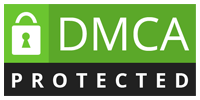Securing APIs with OAuth 2.0 in ASP.NET MVC Web API
In today’s digital landscape, securing APIs is a top priority for developers and organizations alike. OAuth 2.0 stands out as a robust framework for authorization, providing secure access to web APIs without sharing user credentials. If you’re developing a web API using ASP.NET MVC, integrating OAuth 2.0 is a must-have skill. In this article, we'll explore how to implement OAuth 2.0 in ASP.NET MVC Web API.
Why OAuth 2.0?
OAuth 2.0 allows users to delegate access to their resources without exposing their passwords. It provides access tokens that can be used by clients to access specific resources, ensuring controlled and secure data sharing. This makes OAuth ideal for modern web applications requiring fine-grained access control.
Step-by-Step Guide to Implementing OAuth 2.0
1. Set Up Your ASP.NET MVC Web API Project
Start by creating an ASP.NET Web API project in Visual Studio. Ensure you install the necessary NuGet packages for OAuth and OWIN middleware:
Microsoft.Owin.Security.OAuthMicrosoft.Owin.CorsMicrosoft.AspNet.WebApi.Owin
These packages provide tools to handle authentication and authorization seamlessly.
2. Configure OAuth in Startup.cs
The next step is to enable OAuth in your application by configuring it in Startup.cs. Here’s a sample configuration:
3. Create an Authorization Provider
The OAuthAuthorizationServerProvider class handles the core logic for validating clients and granting access tokens. Implement this class with custom validation logic as per your application's requirements:
4. Secure API Endpoints
To enforce access control, use the [Authorize] attribute on your API controllers or methods. This ensures only authenticated users with valid tokens can access the endpoints.
5. Test Your API
You can test your OAuth implementation using tools like Postman:
- Send a POST request to
/tokenwithgrant_type=password,username, andpassword. - Retrieve the access token from the response.
- Use the token in the
Authorizationheader for subsequent API requests.
Best Practices
- Use HTTPS: Always use HTTPS to encrypt sensitive data during transmission.
- Token Expiry: Configure reasonable token expiry times for enhanced security.
- Secure Secrets: Store client secrets securely and avoid hardcoding them.
- Handle Errors Gracefully: Provide meaningful error responses for invalid or expired tokens.
Conclusion
Integrating OAuth 2.0 into your ASP.NET MVC Web API provides robust security, seamless user experience, and scalable authorization mechanisms. With proper implementation, you can ensure your API is well-protected and ready for modern application needs.
Have questions or suggestions? Feel free to share them in the comments section below. Let’s build secure APIs together!
















.gif)
0 Comments